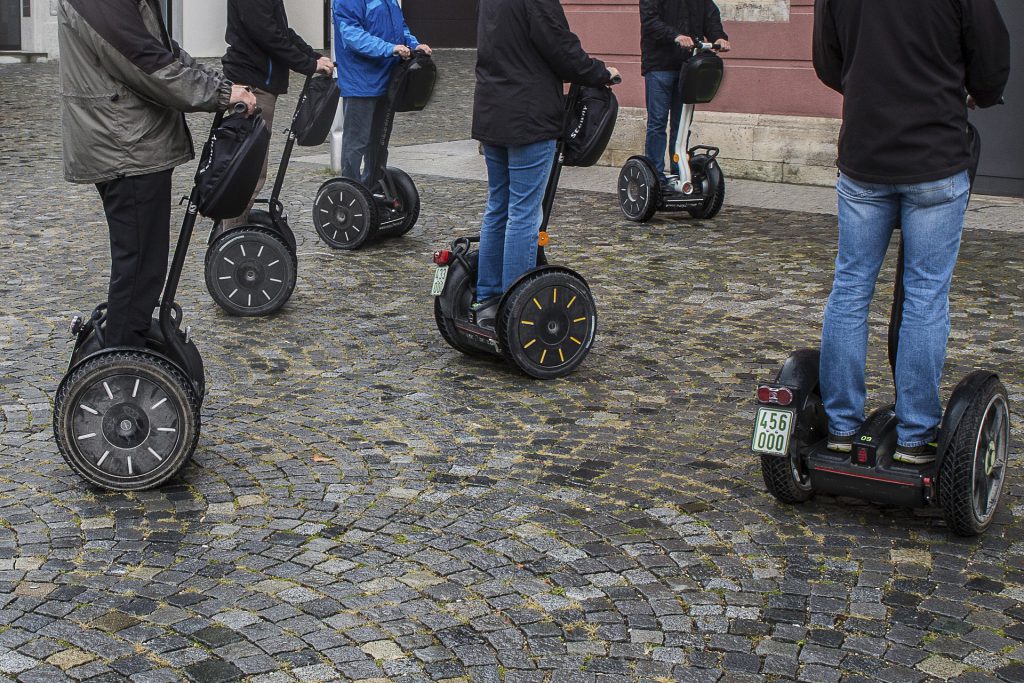The Segway Was the Future, Until it Wasn’t
All the city news you can use.
Every day at The Overhead Wire we sort through over 1,500 news items about cities and share the best ones with our email list. At the end of the week, we take some of the most popular stories and share them with Urban Milwaukee readers. They are national (or international) links, sometimes entertaining and sometimes absurd, but hopefully useful.
The Segway was the future, until it wasn’t: At the turn of the century an inventor came up with an idea he thought everyone would steal, so he kept it secret. The problem was you can’t market a secret idea, and the hype of the unknown often leads to a letdown. That was the story of the Segway, an invention that was the future in the mind of many, but failed to deliver. (Dan Kois | Slate)
The granny flat has a new name: On January 1st 2020, laws in California allowed property owners to build extra units on their property. Called accessory dwelling units, up to two can be built on most properties and have a low barrier to entry with reduced permitting and reasonable construction costs. On the low end these extra units can be around 400 square feet but can go up to 1,200. In a state where housing is expensive, the success of ADUs is a welcome development. (Laurie Lauletta-Boshart | Comstock Magazine)
Infrastructure bill great for EVs, bad for environment: The infrastructure bill being debated in the Senate has billions of dollars to support charging infrastructure for electric vehicles that would make them more palatable to future buyers. However, the bill doesn’t address the fact that the best way to reduce emissions is through active transportation and will entrench the car and its assocated land uses as the default way of travel. (Andrew Hawkins | The Verge)
Cities may be benefit to mental health: For a long time cities have been connected to mental health disorders but new research shows that perhaps larger cities provide an outlet for residents. Taking a more nuanced look into the details, researchers found that doubling a cities population was associated with a 10% reduction in depression rates as residents had more opportunities to interact with others. (Sarah Sloat | Inverse)
Quote of the Week
But we are not just exposed to ozone outdoors; it can also move indoors through windows, doors, and cracks in buildings. So it follows that if ozone concentrations increase outdoors, they will also increase indoors. Indeed, computer models predicted that during lockdown, indoor ozone concentrations would increase by 50%.
–Nicola Carslaw and David Carslaw in Fast Company discussing exposure to indoor air pollution.
This week on the podcast, we’re joined by Robert del Rosario, Director of Service Development for AC Transit in Oakland California.
Want more links to read? Visit The Overhead Wire and signup.
Transportation
-
MCTS Adds 28 New Buses
 Jul 13th, 2024 by Graham Kilmer
Jul 13th, 2024 by Graham Kilmer
-
MCTS Designing New Bus Shelters
 Jul 10th, 2024 by Graham Kilmer
Jul 10th, 2024 by Graham Kilmer
-
MCTS Updates RNC Bus Detours To Better Serve Downtown, Riders
 Jul 9th, 2024 by Jeramey Jannene
Jul 9th, 2024 by Jeramey Jannene
Urban Reads
-
How Traffic Noise Impacts Children’s Brains
 Jul 1st, 2024 by Jeff Wood
Jul 1st, 2024 by Jeff Wood
-
Number of Super Commuters is Rising
 Jun 22nd, 2024 by Jeff Wood
Jun 22nd, 2024 by Jeff Wood
-
Why Has the Walkable City Been Villainized?
 Jun 9th, 2024 by Jeff Wood
Jun 9th, 2024 by Jeff Wood























I remember a few years back a headline in The Onion “What life was like before the Segway.”